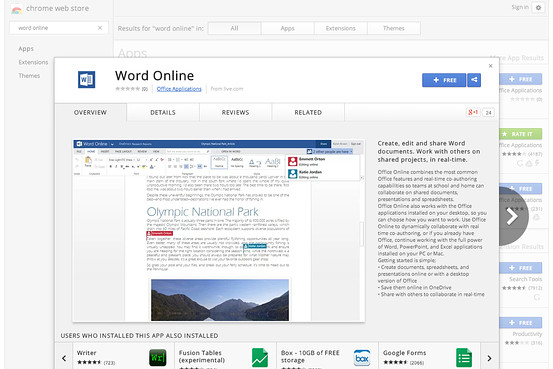A reader of this blog asked “What PC should I buy that can survive the erratic electricity of a third-world residency?” The answer, of course, is “It depends how much you want to spend.” But having reliable computing in a less-developed setting need not break the bank.
Assumptions
You’re an average, modern computer user with professional (i.e., office), social, and personal computing needs preparing to reside outside a first-world power grid. You could be in the mountains of Columbia or Colorado, or, like me, at the end of a one-kilometer driveway. You need to be able to use your PC at any time, but not necessarily all the time. You have a budget.
My previous stories on this subject are here. Your problem is spotty power that can come and go at any moment, day or night, and be off for hours. Your collateral problem is poor power with spikes, low and high voltage, surges, and intermittent on/off cycles. These can and will destroy the unprotected PC power supply in short order.
Strategy
The strategy is to put as much inexpensive stored electricity (i.e., batteries) in front of the computer’s power supply as practical. Duh! The easiest implementation is to use a laptop, which comes with a built-in battery. Modern laptops have hours of self-contained power while you wait for the power grid, backup generator, or tomorrow’s sun to renew your power supply.
Still easy but more expensive choices are a desktop all-in-one (such as an Apple iMac) or a regular desktop. In both the desktop cases cases, you’ll want an uninterruptible power supply (UPS) which stores AC grid power in a battery and delivers it to your electronic devices.
With those assumptions and strategy in mind, here is a prioritized list of what to buy and why to buy it:
The Basics
- A laptop. Commercial grade (e.g., Dell XPS) has higher build quality than consumer grade (e.g., Dell Inspiron). You get what you pay for. Consider: 17″ screen-size as desktop replacement; SSD for reliability and speed. Your choice: Windows, Mac, even Chromebook.
- A high-quality surge protector to filter as much electrical grief as possible. Mandatory unless you use a UPS.
- A bigger and/or backup laptop battery. Greater off-grid time. More efficient than a UPS. Lowest cost when bought bundled with a new laptop.
The Upgrades
- A powerful UPS, where power is measured in volt-amps. Over 1,000VA is better. Below 500VA is probably pointless with a laptop. The UPS has receptacles for other electrical necessities, so it becomes your electrical hub. Also, all UPS systems have power quality circuitry so your PC will always get clean power. Also, PC applications and a USB connection to the UPS can automatically and safely shut any PC down before the UPS itself exhausts its batteries.
- A portable hard drive storage device to back up your PC. If this were me, it would rank in the Basics as a “must have”. The portable hard drives require no electrical power beyond a USB cable. With electricity (from your UPS), there are faster/greater capacity options.
- A USB 3.0 Hub for greater I/O connectivity. Your laptop or all-in-one will never have enough USB ports for the printers, backup storage, Bluetooth speakers, and mobile devices that need charging. Your choices are four or seven ports. Go with the powered seven-port hub. After all, everyone in your house (office) will want to leech off your clean power. Plan accordingly.
The Options
Here’s where the budget goes out the window, but your level of electricity paranoia is nobody else’s business:
- A secondary monitor scales your laptop’s screen to desktop size or becomes a second screen with more real estate.
- Backup generator sized to your home electricity load. Best purchased locally as you will require service eventually. Requires (clean) gasoline.
- Solar power generator requires solar panels, an AC inverter, and distribution hub. It can have its own battery for storage or use the UPS already in our specs. The money problem is a 300-400 watt solar installation can easily cost as much or more than our laptop computing device.
- The ultimate upgrade for this scenario is a Ford C-Max Energi plug-in hybrid car with internal 7.4 kWh batteries, 2 AC power outlets, USB charging, and 12-volt power. You can also drive it. $31,770 and up.
Is a Tablet an Alternative?
A tablet or a laptop/tablet (i.e., a two-in-one) is worth considering. Portable, mobile, self-contained cellular network option. Some have a desktop operating system. The keyboard and mouse can use easily rechargeable AA batteries. Device operating life often exceeds eight hours. Rechargeable from a small solar panel. Connects to Bluetooth peripherals and to a video monitor/TV via an HDMI cable.
Minimalist computing dramatically simplifies backup power requirements.
Consolidated electronics such as a tablet connected to the LCD monitor also used as a TV makes planning easier and redundancy less necessary.
The Network
Getting on the Internet has its own set of problems and costs. You’ll need local knowledge to make cost-effective decisions.
Assuming a controllable data budget, the easiest Internet on-ramp is to use your smartphone as a hotspot and connect your laptop via Bluetooth. You won’t find unlimited data plans in the third world, so this approach needs careful usage-based planning.
A conventional desktop or laptop setup will require a network access device(s) to the cable, wireless broadband, or satellite network. Plan to power-protect these devices too by plugging them into your UPS. However, that limits PC placement to being close to the network access point.
Follow @PeterSKastner on Twitter
Note: the products linked in this blog post are not endorsed by the author. The author has no financial ties to any product mentioned in this blog post.




